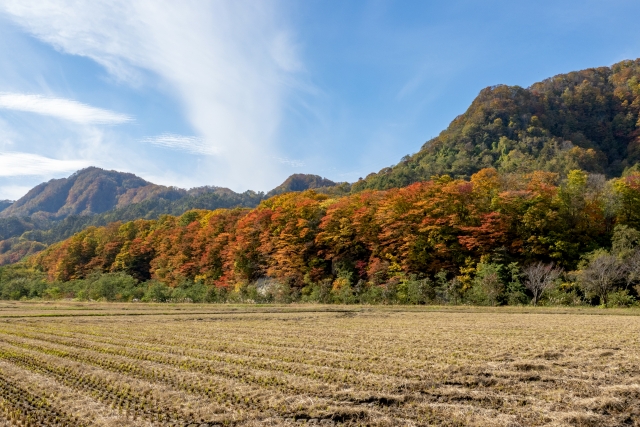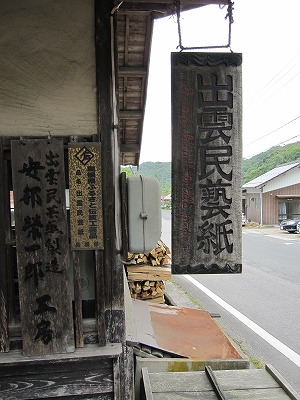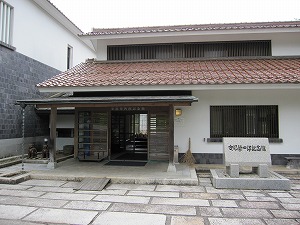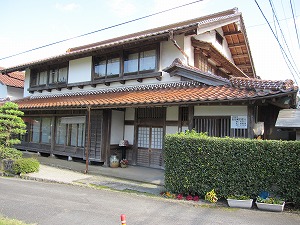Yakumo Town in Matsue City, Shimane Prefecture, is a region with a rich history of traditional Japanese papermaking.
Let us introduce you to the papermaking history that began during the Edo period, the achievements of Eishiro Abe (a Living National Treasure), and the workshop and memorial hall that continue to preserve this precious tradition today.
About Yakumo Washi Village

In Yakumo Town, Matsue City, papermaking began during the early Edo period as a side business for farmers with limited agricultural land.
The techniques were passed down from artisans brought by the first feudal lord, and the domain encouraged paper production as it was a valuable commodity at the time. While many papermaking workshops once flourished here, today only Shin’ichiro Abe’s workshop remains.
This area offered easy access to raw materials for washi such as mitsumaata (paper mulberry), kozo (mulberry), and ganpi (diplomorpha sikokiana). The history of Izumo washi dates back to the Tempyo era (729-749).
Particularly renowned is ganpi-shi (paper made from ganpi), known for its durability and longevity as a premium paper.
About Izumo Mingei-shi Workshop

The Izumo Mingei-shi Workshop, built in 1933, continues to preserve the tradition of handmade washi paper to this day.
Here, natural materials such as kozo, mitsumaata, and ganpi are used, carrying on the techniques of Eishiro Abe, who was designated a Living National Treasure. (Eishiro Abe particularly perfected the technique of creating ganpi-shi through years of dedicated effort.)
Distinctive papers like Izumo Kumo-gami (cloud paper) and Magatama washi are crafted here.
In recent years, to address challenges such as material shortages, new initiatives including self-cultivation of raw materials (tororo-aoi and mitsumaata) have been implemented.
The workshop is located at:
- Address: 1733 Higashi-iwasaka, Yakumo-cho, Matsue City, Shimane Prefecture
- Phone: +81-852-54-0303
About the Eishiro Abe Memorial Museum

The Eishiro Abe Memorial Museum was established by Eishiro Abe himself in October 1983 to promote handmade washi. Its purpose is to preserve and pass down materials, enhance the reputation of washi, and nurture future artisans.
Eishiro Abe participated in the Mingei (folk craft) movement and, through his interactions with Soetsu Yanagi and others, created his unique washi. He was designated a Living National Treasure in 1968. (His participation in the Mingei movement distinguishes this region from other papermaking areas.)
The museum primarily exhibits mingei works, with the intention that “visitors will feel the connection between washi and other art forms such as kimono and paintings through the display of mingei artists’ works.” (Many works by Mingei movement participants who had connections with Eishiro Abe are also on display.)
The museum shop offers practical washi products and crafts, and the adjacent workshop provides papermaking experiences (reservation required).
- Opening hours: 9:00 AM – 4:30 PM, closed on Tuesdays (or the following day if Tuesday is a holiday).
- Admission: 500 yen for adults
- Address: 1754 Higashi-iwasaka, Yakumo-cho, Matsue City, Shimane Prefecture
- Phone: +81-852-54-1745
About the Eishiro Abe Residence

The Eishiro Abe Residence is located across from the Izumo Mingei-shi Workshop. It was built in 1959. Today, it serves as the home of Shin’ichiro Abe and Norimasa Abe.
The Eishiro Abe Residence is a traditional Japanese house with an entrance that exudes a sense of profound history. The interior resembles a washi museum, filled with research materials and works of Eishiro Abe, who was designated a Living National Treasure.
In the past, many artists involved in the Mingei movement visited the Eishiro Abe Residence. Letters that remain reveal the deep camaraderie they shared. The residence features a large irori (traditional sunken hearth) where Eishiro welcomed his many visitors.
Please note that the Eishiro Abe Residence is not open to the general public. However, some of the art pieces that were stored there are now preserved at the Eishiro Abe Memorial Museum, where they can be appreciated.
